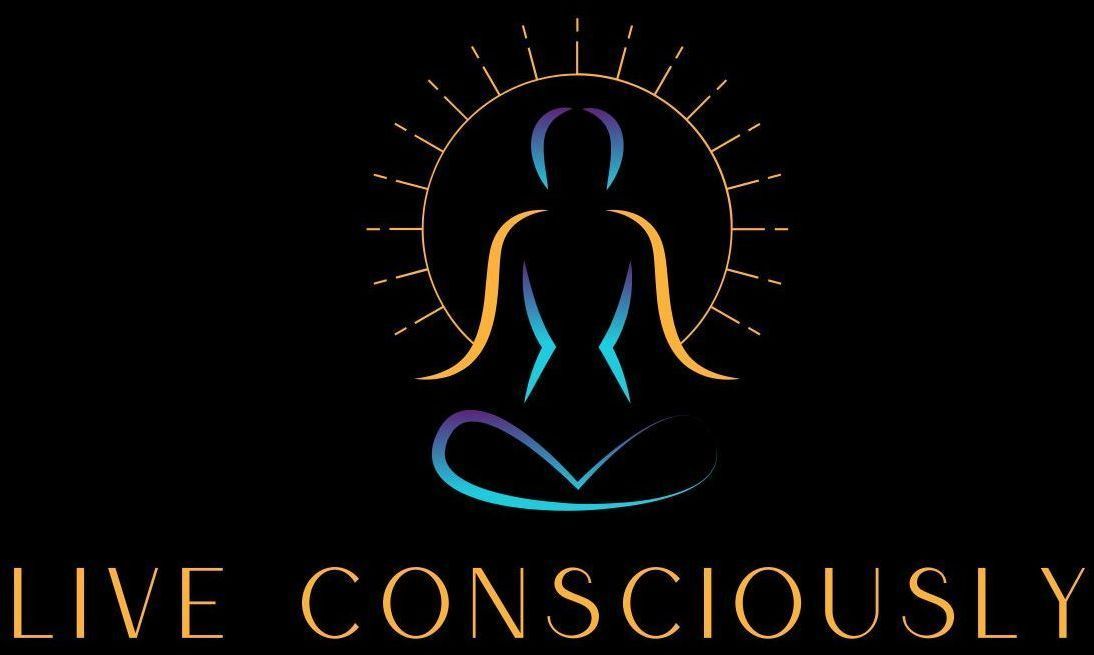Understanding Complex PTSD and Why Traditional Approaches Often Fall Short

Have you ever felt like your trauma symptoms were more complicated than what you've read about PTSD? Maybe you struggle not just with flashbacks or nightmares, but with a deeper sense of feeling fundamentally broken, unable to maintain relationships, or completely disconnected from who you are. If traditional PTSD treatments haven't quite addressed the full scope of your experience, you might be dealing with something more complex.
As a licensed clinical social worker specializing in trauma recovery for over 15 years, I've worked with hundreds of survivors who initially came to therapy feeling frustrated that their symptoms didn't fit neatly into the PTSD box. What they discovered—and what I want to share with you today—is that there's a significant difference between PTSD from a single traumatic event and the deep, pervasive impact of complex trauma.
In this comprehensive guide, you'll learn what complex PTSD really is, how it differs from traditional PTSD, why it requires specialized treatment approaches, and most importantly—how healing is absolutely possible with the right support and understanding.
What Is Complex PTSD (CPTSD)?
Complex PTSD, sometimes abbreviated as CPTSD, is a mental health condition that develops from prolonged, repeated trauma, particularly during childhood or in situations where escape was impossible. Unlike traditional PTSD, which typically results from a single traumatic event, complex PTSD emerges from ongoing trauma that occurs over months or years.
Dr. Judith Herman, who first coined the term, describes complex PTSD as the result of "prolonged, repeated trauma" combined with captivity—whether physical, emotional, or psychological. This might include:
- Childhood abuse or neglect (emotional, physical, or sexual)
- Domestic violence in long-term relationships
- Human trafficking or sex trafficking
- Prisoner of war experiences or concentration camps
- Cult involvement or other controlling environments
- Ongoing medical trauma during vulnerable periods
What makes complex trauma particularly devastating is that it often occurs during critical developmental periods when we're forming our sense of self, learning to trust others, and developing coping mechanisms for life's challenges.

Complex PTSD vs. PTSD: Understanding the Key Differences
While traditional PTSD and complex PTSD share some symptoms, the differences are significant and understanding them can be life-changing for your healing journey.
Traditional PTSD Symptoms Include:
- Re-experiencing: Flashbacks, nightmares, intrusive memories
- Avoidance: Avoiding trauma reminders, places, people
- Negative alterations in mood and cognition: Depression, negative beliefs about self/world
- Hyperarousal: Hypervigilance, startled response, sleep problems
Complex PTSD Includes All PTSD Symptoms PLUS:
1. Emotional Regulation Difficulties
- Intense emotions that feel overwhelming and uncontrollable
- Difficulty calming down once upset
- Emotional numbness alternating with intense reactivity
- Feeling like emotions come "out of nowhere"
2. Negative Self-Concept
- Deep-seated feelings of worthlessness, shame, or being fundamentally flawed
- Persistent self-blame and guilt
- Feeling different from others or permanently damaged
- Loss of previously held beliefs about yourself
3. Interpersonal Problems
- Difficulty trusting others or forming secure attachments
- Fear of abandonment coupled with fear of intimacy
- Patterns of unstable or chaotic relationships
- Social withdrawal and isolation
- Difficulty maintaining boundaries
In my clinical practice, I often see clients with complex PTSD describe feeling like they're "broken at the core" in a way that goes beyond specific traumatic memories. One client recently shared, "It's not just that bad things happened to me—it's like those experiences rewired my entire system for danger and disconnection."

The Neurobiology Behind Complex Trauma
Understanding what happens in your brain and nervous system during complex trauma can be incredibly validating and help explain why healing requires specialized approaches.
How Complex Trauma Affects Development
When trauma occurs repeatedly during childhood, it interrupts normal brain development. The areas responsible for emotional regulation, impulse control, and relationship formation—primarily the prefrontal cortex and limbic system—develop under constant stress conditions.
Dr. Dan Siegel's research shows that chronic trauma can lead to:
- Hyper-activated amygdala: Your alarm system becomes oversensitive
- Underdeveloped prefrontal cortex: Difficulty with emotional regulation and decision-making
- Disrupted neural integration: Different parts of the brain struggle to communicate effectively
- Chronic nervous system dysregulation: Stuck in fight-flight-freeze-fawn responses
The Polyvagal Theory Connection
Through the lens of Polyvagal Theory, which we integrate into our treatment approach at Live Consciously, complex trauma often results in a nervous system that has learned to expect danger rather than safety. Your autonomic nervous system may cycle between:
- Hyperarousal (sympathetic activation): Anxiety, panic, hypervigilance
- Hypoarousal (dorsal vagal shutdown): Numbness, dissociation, depression
- Brief moments in the "window of tolerance" where you feel regulated and connected
This understanding helps explain why someone with complex PTSD might struggle with emotional regulation in ways that seem disproportionate to current situations—your nervous system is responding to old patterns of threat.

Why Traditional PTSD Treatments Often Fall Short for Complex Trauma
If you've tried traditional PTSD treatments like Cognitive Behavioral Therapy (CBT) or even EMDR and felt like something was still missing, you're not alone. Here's why:
1. Focus on Specific Events vs. Developmental Impact
Traditional PTSD treatment often focuses on processing specific traumatic memories. Complex trauma, however, affects your entire developmental foundation—how you see yourself, relate to others, and navigate the world.
2. Cognitive-Heavy Approaches
Many traditional therapies rely heavily on changing thoughts and beliefs. When trauma has affected the emotional and nervous system regulation centers of the brain, cognitive approaches alone may not be sufficient.
3. Insufficient Attention to Attachment and Relationships
Complex trauma is fundamentally relational trauma. Traditional approaches may not adequately address the deep attachment wounds and interpersonal difficulties that are central to complex PTSD.
4. Overlooking the Body
Complex trauma lives in the nervous system and body, not just in thoughts and memories. Approaches that don't include somatic awareness and regulation may miss crucial elements of healing.

Evidence-Based Approaches for Complex PTSD Treatment
The good news is that specialized treatments for complex PTSD have shown significant effectiveness. At Live Consciously, we integrate several evidence-based approaches:
Internal Family Systems (IFS)
IFS helps you work with different "parts" of yourself that developed to cope with trauma. This approach recognizes that complex trauma often creates internal conflicts and helps integrate these parts in healthy ways.
Somatic Experiencing (SE)
Developed by Dr. Peter Levine, SE focuses on releasing trauma stored in the nervous system through gentle attention to bodily sensations and natural healing responses.
EMDR with Complex Trauma Protocols
While standard EMDR can be helpful, complex trauma often requires modified protocols that address developmental trauma and attachment wounds, not just specific incidents.
Dialectical Behavior Therapy (DBT) Skills
Originally developed for borderline personality disorder (which often co-occurs with complex PTSD), DBT teaches crucial emotional regulation, distress tolerance, and interpersonal effectiveness skills.
Polyvagal-Informed Therapy
Understanding and working with your nervous system's responses to safety and threat is crucial for complex trauma recovery.
What Complex PTSD Recovery Actually Looks Like
Recovery from complex PTSD is possible, but it's important to have realistic expectations about the process:
It's Not Linear
Healing happens in waves. You might feel significantly better for weeks, then have difficult periods. This is normal and doesn't mean you're not making progress.
It Takes Time
Because complex trauma affected your foundational development, healing requires patience. Most people need 2-5 years of consistent therapeutic work, though improvements often begin within the first few months.
It's Relational
Healing happens in relationship. The therapeutic relationship itself becomes a place to practice new patterns of trust, boundaries, and communication.
Integration, Not Just Recovery
Rather than simply "getting over" trauma, complex PTSD recovery involves integrating your experiences in a way that allows you to live fully and authentically.
Practical Steps for Daily Complex PTSD Management
While professional therapy is essential, there are daily practices that can support your nervous system regulation:
Nervous System Regulation Techniques
For Hyperarousal (feeling anxious, overwhelmed):
- Extended exhale breathing (breathe in for 4, out for 6-8)
- Cold water on face or wrists
- Progressive muscle relaxation
- Grounding through your five senses
For Hypoarousal (feeling numb, disconnected):
- Gentle movement or stretching
- Energizing breathwork
- Engaging with textures, tastes, or sounds
- Brief social connection
Building Self-Compassion
Complex trauma often leaves people with harsh inner critics. Practice speaking to yourself as you would a dear friend facing the same challenges.
Creating Safety and Predictability
Establish routines and environments that signal safety to your nervous system. This might include consistent sleep schedules, calming evening routines, or creating a safe space in your home.

When to Seek Professional Help
If you recognize yourself in the complex PTSD symptoms described above, professional support can be transformative. Consider reaching out if you're experiencing:
- Persistent emotional dysregulation that interferes with daily life
- Relationship patterns that feel destructive or unfulfilling
- Chronic feelings of emptiness, shame, or being fundamentally flawed
- Difficulty maintaining stable work, housing, or relationships
- Thoughts of self-harm or suicide
What to Look for in a Complex Trauma Therapist
- Specific training in complex trauma and attachment
- Understanding of nervous system regulation and somatic approaches
- Experience with longer-term therapy relationships
- Awareness of the differences between single-incident and complex trauma
- Integration of body-based and relational approaches
Hope and Healing: Your Journey Forward
Living with complex PTSD can feel isolating and hopeless, but I want you to know that healing is not only possible—it's happening every day in therapy offices around the world, including right here in Central Texas.
In my years of working with complex trauma survivors, I've witnessed profound transformations. I've seen clients move from feeling fundamentally broken to experiencing genuine self-compassion. I've watched people who couldn't maintain relationships develop secure, loving connections. I've observed individuals paralyzed by emotional dysregulation learn to navigate their inner world with skill and grace.
Your complex PTSD symptoms aren't a character flaw or a sign of weakness—they're evidence of your nervous system's attempt to protect you during impossible circumstances. With the right support, understanding, and specialized treatment approaches, you can heal the deep wounds of complex trauma and reclaim your life.
Recovery from complex PTSD isn't about returning to who you were before trauma—it's about becoming who you're meant to be, integrating your experiences in a way that includes wisdom, resilience, and authentic connection with yourself and others.
Take the Next Step in Your Healing Journey
If you're ready to address complex trauma with approaches specifically designed for deep, lasting healing, we're here to support you. Our trauma-informed therapists at Live Consciously understand the complexity of developmental trauma and use evidence-based, body-centered approaches to help you regulate your nervous system, heal attachment wounds, and develop the skills for lasting recovery.
You don't have to navigate complex PTSD alone. Schedule a free 15-minute consultation to learn how our specialized approach to complex trauma can support your unique healing journey.
Ready to begin healing from complex trauma?
📞
Call us:
(254) 826-9450
📧
Email:
info@liveconsciouslypllc.com
🌐
Visit:
www.liveconsciouslypllc.com

About the Author
Alexandrea Long, LCSW-S is a Licensed Clinical Social Worker Supervisor specializing in complex trauma recovery at Live Consciously, PLLC. With over 15 years of experience in trauma-informed care, Alexandrea has advanced training in Internal Family Systems (IFS), Somatic Experiencing, EMDR, and Polyvagal Theory applications. She is passionate about helping clients understand the mind-body connection and develop practical skills for nervous system regulation and attachment healing. Alexandrea has guided hundreds of complex trauma survivors through their healing journeys, combining evidence-based approaches with compassionate, relational therapy.
References:
- Herman, J. L. (2015). Trauma and Recovery: The Aftermath of Violence--From Domestic Abuse to Political Terror. Basic Books.
- Siegel, D. J. (2020). The Developing Mind: How Relationships and the Brain Interact to Shape Who We Are. Guilford Press.
- Van der Kolk, B. A. (2014). The Body Keeps the Score: Brain, Mind, and Body in the Healing of Trauma. Viking.
- Porges, S. W. (2011). The Polyvagal Theory: Neurophysiological Foundations of Emotions, Attachment, Communication, and Self-regulation. W. W. Norton & Company.
Related Articles:
- Understanding Emotions and Their Vital Role in Mental Health and Wellbeing
- Recognizing Emotional Triggers
- How EMDR Therapy Unlocks Your Brain's Natural Healing Process











